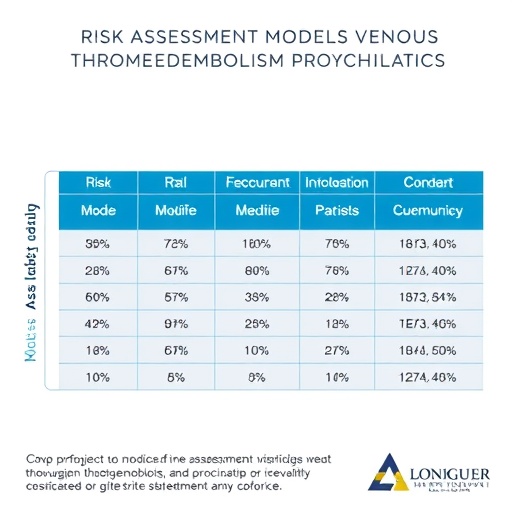The natural world has long astounded scientists with its array of survival strategies, among which torpor stands out as a remarkable physiological adaptation. Torpor represents a drastic, yet reversible, state of metabolic suppression that certain animals enter to endure otherwise inhospitable environmental conditions. This evolved mechanism allows organisms to reduce their metabolic rate and body temperature substantially, conserving energy during periods of food scarcity, extreme cold, or other stressors. The intriguing nature of torpor has spurred intense scientific interest, not only to understand its underlying biology but also to harness its benefits for transformative medical applications. In recent years, the concept of synthetic torpor—an artificially induced, controlled hypometabolic state—has emerged at the forefront of biomedical innovation, promising to redefine how metabolic diseases and acute medical conditions are managed.
For over a century, researchers have aspired to replicate the advantageous metabolic suppression characteristic of torpor in non-hibernating species, including humans. Early scientific efforts primarily focused on pharmacological interventions, aiming to discover drugs capable of system-wide metabolism suppression. These attempts often faced significant challenges due to the complexity of metabolic regulation and the risks associated with systemic metabolic shutdown. However, a watershed moment occurred in 2020 when pioneering studies successfully identified specific neuronal populations in the hypothalamus of mice that orchestrate torpor onset. This breakthrough opened unprecedented avenues for neuromodulation as a means to precisely control metabolic states, circumventing the nonspecific and potentially dangerous effects of systemic drug administration.
Understanding the neural circuitry that governs natural torpor is pivotal to developing synthetic analogues. The hypothalamus, a small but critically important structure within the brain, integrates environmental and physiological signals to maintain energy balance and body temperature. In particular, recent research has focused on a subset of neurons expressing the protein Adcyap1, whose activation induces rapid entry into torpor. Manipulating these neurons through optogenetic or chemogenetic methods has allowed researchers to induce reversible hypometabolic states in animal models, mimicking the natural process in a controlled manner. This neuromodulatory control offers a high degree of precision, enabling regulation of metabolic rate without widespread adverse effects.
.adsslot_2l4sgLFMjx{ width:728px !important; height:90px !important; }
@media (max-width:1199px) { .adsslot_2l4sgLFMjx{ width:468px !important; height:60px !important; } }
@media (max-width:767px) { .adsslot_2l4sgLFMjx{ width:320px !important; height:50px !important; } }
ADVERTISEMENT
Beyond ischemic protection, synthetic torpor shows promise in enhancing radiation tolerance. High-dose ionizing radiation, a mainstay in cancer treatment and space exploration hazards, causes significant cellular damage linked to oxidative stress and DNA injury. By entering a hypometabolic state, cells reduce their metabolic activity and reactive oxygen species production, potentially mitigating radiation-induced damage. This discovery might pave the way for innovative radioprotective strategies that improve outcomes for cancer patients undergoing radiotherapy or astronauts exposed to cosmic radiation on long-duration missions.
One of the most groundbreaking areas of synthetic torpor research lies in lifespan extension. Metabolic rate is intimately linked to aging and longevity, as higher metabolic turnover correlates with accelerated accumulation of cellular damage. Experimental models have demonstrated that periodic or sustained induction of torpor-like states can decelerate aging processes, possibly by reducing metabolic stress and enhancing repair mechanisms. While this concept remains in early stages, it hints at future therapeutic modalities targeting age-related diseases and promoting healthy longevity through metabolic engineering.
Achieving synthetic torpor in mammals devoid of natural torpor capabilities requires overcoming several physiological challenges. Unlike hibernators, whose body systems are uniquely adapted to tolerate prolonged hypometabolism, non-hibernating species maintain robust thermoregulatory and metabolic mechanisms that resist such states. Therefore, inducing synthetic torpor mandates sophisticated interventions that modulate neural, endocrine, and metabolic axes simultaneously. Recent advances in neurotechnology, including minimally invasive neuromodulation tools and bioengineered molecular switches, have brought this goal closer to reality by enabling fine-tuned control over the circuitry governing metabolism and temperature homeostasis.
The interdisciplinary nature of synthetic torpor research merges insights from neuroscience, physiology, molecular biology, and biomedical engineering. Sophisticated animal models, such as genetically engineered mice with targeted activation of torpor-inducing neurons, serve as proof-of-principle platforms to elucidate the mechanistic underpinnings and physiological sequelae of induced hypometabolism. Concurrently, advances in metabolomics and imaging technologies allow researchers to monitor metabolic fluxes and organ function in real-time during synthetic torpor states, yielding critical data for optimizing protocols and assessing safety.
Innovative strategies currently under exploration include targeted pharmacological agents that selectively modulate torpor-related neural pathways, along with implantable neuromodulation devices capable of delivering precise stimuli to key brain regions. These approaches aim to create reversible, safe, and controlled synthetic torpor states applicable in clinical settings. Additionally, researchers are investigating combinatorial therapies that integrate metabolic suppression with antioxidant and anti-inflammatory agents, providing a multifaceted approach to tissue protection and repair.
Beyond acute medical interventions, synthetic torpor may reshape the future of space medicine. Long-duration space travel exposes astronauts to extreme environmental stressors, including microgravity, radiation, and limited resources. Induced hypometabolism could reduce physiological demands, preserve muscle and bone integrity, and minimize psychological stress by decreasing consciousness and sensory input temporarily. Such applications could extend human exploration capabilities and enhance mission success probabilities.
Despite dramatic progress, many fundamental questions remain unresolved. The exact cellular and molecular cascades triggered during synthetic torpor, and how they interface with broader systemic homeostasis, require further elucidation. Investigating potential long-term consequences, such as impacts on immune function or neuroplasticity, is critical to ensure safety. Moreover, the challenge of precisely controlling the depth and duration of hypometabolism necessitates ongoing refinement of stimulation parameters and biomarker monitoring.
As research accelerates, ethical considerations surrounding synthetic torpor deployment gain prominence. Balancing therapeutic benefits against potential risks, ensuring informed consent, and addressing societal implications of induced states of reduced metabolism require proactive dialogue among scientists, ethicists, and the public. Regulatory frameworks will need to adapt to oversee novel neuromodulatory interventions that intricately manipulate fundamental biological functions.
In conclusion, the pursuit of synthetic torpor represents a thrilling frontier at the intersection of biology and medicine. By decoding and harnessing nature’s ancient survival strategy, scientists aim to unlock revolutionary approaches to protect and heal the human body under duress. While still in nascent stages, the refinement of neuromodulation techniques and metabolic control promises to transform critical care, transplantation, aging, and even space exploration. As researchers continue to illuminate the profound complexities of metabolic regulation, synthetic torpor stands poised to become a game-changing paradigm in biomedical innovation.
Subject of Research: Synthetic torpor and neuromodulation-based metabolic regulation for medical applications.
Article Title: Synthetic torpor: advancing metabolic regulation for medical innovations.
Article References:
Wu, W., Sunagawa, G.A. & Chen, H. Synthetic torpor: advancing metabolic regulation for medical innovations. Nat Metab (2025). https://doi.org/10.1038/s42255-025-01345-3
Image Credits: AI Generated
Tags: biomedical innovation in metabolismcontrolled hypometabolic stateenergy conservation strategies in biologymetabolic diseases managementmetabolic suppression mechanismspharmacological interventions in metabolismphysiological adaptation in animalsresearch on neuronal mechanismssurvival strategies in extreme conditionssynthetic torpor applicationstorpor in non-hibernating speciestransformative medical applications of torpor





